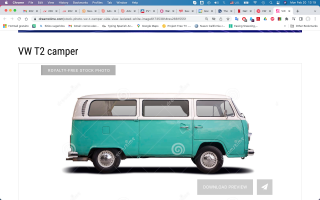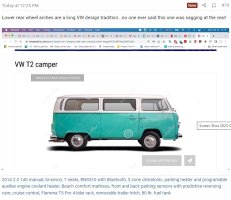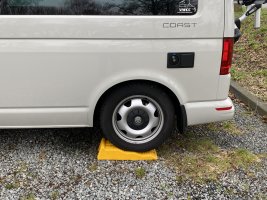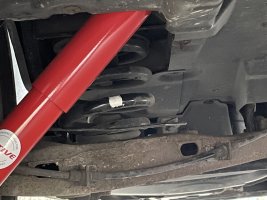You are correct, no accident by VW As far as different wheel arch heights front / rear, additional load will change the height stance of a vehicle which could be mitigated with air suspension.

Sadly VW did not supply Air suspension.
that’s why there is a huge international aftermarket business built solely around the fact that the rear wheel arch of a transporter has been designed to be lower than the front wheel arch profile, therefore creating a visual effect which some do not like & spawning an aftermarket to “correct“ the visual aspect for those who do not like it and are willing to do some thing.
measuring the ride height of a vehicle Or the “level“ of a vehicle:
is a snap shot based on many many variable at any given time, static load, imposed load, age of vehicle etc,
A known level datum and good knowledge of the OEM tolerance is required & knowledge of the parameters relating to that specific vehicle build and the possible variables that may affect such assessment Is required.
Anyone have that info ?
anyone got a properly dimension drawing for a California?
, (any factory variant) that will provide an unequivocal answer to the correct stance and allow the layman to check the correct level of any given body part to assess the vehicles compliance Against OEM spec?
(Not just the marketing drawing showing simple external body dimensions such as roof height, length, wheel base etc, available on the internet)
the answer is NO, it’s not out in the public domain.
all we know is that the California ride height / suspension is set up differently from other transporter variants,
We know the California is intended for camping / touring, not carrying heavy additional loads As a panel van.
we all know there are many many factors that can add a variable imposed loads such as water , fuel, additional equipment, passengers etc. and other variables such factory extras, drive train, tyre pressures / size / wheel size etc etc.
To some this can make it look as if the rear end is sagging , compared to other similar vans (sometimes people mistakenly compare different variants, models etc, expecting the stance to be the same On all)
We know various vans have various different coil spring rating, denoted by colour coding, so we know the manufacturer is aware of differences in set up based on for example California model, let alone the entire transporter range, we know different vans have different set up based on the OEMs intended use of the vehicle etc.
we also know that every transporter since T5 onwards has a different height rear wheel arch to the front which contributes to the perceived issue! (T2 included)
Under what conditions should we expect a California Variant, in whichever format / model, sit perfectly level or have an amount of sag at the rear?
What is the tolerance allowed?
The only real test would be to take it to the manufacturers or approved garage capable of carrying out a proper assessment to determine if it is within the intended design tolerance!
Enjoy your vehicles and the mods you do, just stay safe and be prepared for an answer that may not fit your agenda.


















